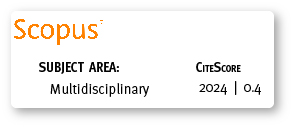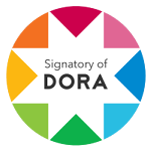Propiedades psicométricas del TEOSQ adaptado a la educación física en estudiantes ecuatorianos
DOI:
https://doi.org/10.18537/mskn.07.02.06Palabras clave:
TEOSQ, orientación motivacional, propiedades psicométricas, estudiantes ecuatorianosResumen
El propósito de este trabajo fue analizar las propiedades psicométricas de la versión española del Cuestionario de Orientación al Ego y a la Tarea (TEOSQ) adaptada a la EF1, en un contexto ecuatoriano. En el estudio participaron 580 estudiantes de EF con edades comprendidas entre 12 y 16 años (M = 13.15; DT = 1.29). Los resultados de los análisis factoriales apoyaron la estructura del instrumento obtenida en estudios previos. La herramienta mostró un nivel adecuado de consistencia interna (αEgo = .86 y αTarea = .80) y las diferencias de género indicaron que los chicos mostraron mayor orientación al ego que las chicas en línea con lo encontrado en la literatura. Los resultados permiten considerar la versión adaptada a la EF del TEOSQ en castellano como un instrumento fiable y válido para valorar la orientación de los estudiantes hacia la tarea y hacia el ego en el contexto ecuatoriano.
Descargas
Métricas
Citas
American Psychological Association, 2002. Ethical principles of psychologists and code of conduct. American Psychologist, 57, 1060-1073.
Bakirtzoglou, P., P. Ioannou, 2011. Goal orientations, motivational climate and dispositional flow in Greek secondary education students participating in physical education lesson: differences based on gender. Facta Universitatis, 9(3), 295-306.
Balaguer, I., I. Castillo, I. Tomás, 1996. Análisis de las propiedades psicométricas del Cuestionario de Orientación al Ego y a la Tarea en el Deporte (TEOSQ) en su traducción al castellano. Psicológica, 17, 71-81.
Baric, R., S. Horga, 2006. Psychometric Properties of the Croatian Version of Task and Ego Orientation in Sport Questionnaire (CTEOSQ). Kinesiology, 38, 135-140.
Baric, R., J. Vlasic, S. Cecic Erpic, 2014. Goal orientation and intrinsic motivation for physical education: Does perceived competence matter? Kinesiology, 46(1), 117-126.
Bentler, P.M., 1989. EQS structural equations program manual. Los Angeles, CA: BMDP Statistical Software.
Browne, M.W., R. Cudeck, 1993. Alternative ways of assessing model fit. In: Bollen, K.A., J.S. Long (Eds.), Testing Structural Equation Models (pp. 136-162). Beverly Hills, CA: Sage.
Byrne, B.M., 2001. Structural equation modeling with Amos: Basic concepts, applications, and programming. Mahwah, NJ: Erlbaum.
Cindi, H.P.S., J.L. Koenraad, 2005. Motivational orientations in youth sport participation: Using Achievement Goal Theory and Reversal Theory. Personality and Individual Differences, 38, 605-618.
Cronbach, L.J., 1951. Coefficient alpha and the internal structure of tests. Psychometrika, 16, 297-334.
De Andrade, A., A. Salguero, R. González-Boto, S. Márquez, 2008. The relationship of participation motivation to gual orientations and perceived physical ability in Brazilian swimmers. Psychologia, 51, 157-169.
Duda, J.L., 1989. Relationship between task and ego orientation and the perceived purpose of sport among high school athletes. Journal of Sport and Exercise Phychology, 11, 318-335.
Duda, J.L., M.T. Allison, 1990. Cross-cultural analysis in exerecise and sport psychology: a void in the field. Journal of Sport and Exercise Phychology, 12, 114-131.
Duda, J.L., C. Hayashi, 1998. Measurement issues in cross-cultural research within sport and exercise psychology. In: Duda, J.L. (Ed.), Advances in sport and exercise psychology measurement (pp. 471-483). Morgantown, W.Va: Fitness Technology.
Fonseca, A., P.A. Brito, 2005. The issue of the cross-cultural adjustment of instruments for psychological evaluation in national sport contexts. The case of the Task and Ego Orientation in Sport Questionnaire (TEOSQ). Psychologica, 39, 95-118.
Guivernau, M., J.L. Duda, 1994. Psychometric properties of a Spanish version of the tast and ego orientation in sport questionnaire (TEOSQ) and beliefs about the causes of success inventory. Revista de Psicología del Deporte, 5, 31-51.
Hambleton, R. K. (2006). Adaptación de tests para su uso en diferentes idiomas y culturas: fuentes de error, posibles soluciones y directrices prácticas. In: Muñiz, J. (Ed.), Psicometría (pp. 207-238). Madrid, España: Universitas, S.A.
Helms, J.E., 1992. Why is there no study of cultural equivalence in standardized cognitive-ability testing. American Psychologist, 47, 1083-1101.
Hu, L., P.M. Bentler, 1995. Evaluating model fit. In: Hoyle, R. (Ed.), Structural equation modeling: Issues, concepts, and applications. Newbury Park, CA: Sage.
Hu, L., P.M. Bentler, 1999. Cutoff criteria for fit indexes in covariance structure analysis: Conventional criteria versus new alternatives. Structural Equation Modeling, 6(1), 1-55.
Kaiser, H.F., 1974. An index of factorial simplicity. Psychometrika, 39, 31-36.
Kim, B.J., L. Williams, D.L. Gill, 2003. A cross-cultural study of achievement orientation and intrinsic motivation in young USA and Korean athletes. International Journal of Sport Psychology, 34, 168-184.
Li, F., P. Harmer, L. Chi, N. Vongjaturapat, 1996. Cross-cultural validation of the task and ego orientation in sport questionnaire. Journal of Sport and Exercise Phychology, 18, 392-407.
López-Walle, J., I. Balaguer, J.L. Meliá, I. Castillo, J. Tristán, 2011. Adaptación a la población mexicana del Cuestionario de Orientación al Ego y a la Tarea en el Deporte (TEOSQ). Revista de Psicología del Deporte, 20(2), 523-536.
Marsh, H.W., K.T. Hau, Z. Wen, 2004. In search of golden rules: Comment on hypothesis-testing approaches to setting cutoff values for fit indexes and dangers in overgeneralizing hu and Bentler's (1999) findings. Structural Equation Modeling, 11(3), 320-341.
Moreno-Murcia, J.A., E. Huéscar, N. Parra, 2013. Manipulación del clima motivacional en Educación Física para evitar el aburrimiento. Revista Mexicana de Psicología, 30(2), 108-114.
Moreno-Murcia, J.A., C. Martínez-Galindo, V. Moreno, P.J. Marcos Pardo, L. Conte, R. Moreno González, 2012. Motivación, creencias de habilidad e intención de ser físicamente activo al finalizar la Educación obligatoria. Revista Mexicana de Psicología, 29(2), 175-183.
Muñiz, J., P. Elosua, R.K. Hambleton, 2013. Directrices para la traducción y adaptación de los tests: segunda edición. Psicothema, 25(2), 151-157.
Nicholls, J. G. (1989). The competitive ethos and democratic. Cambridge, MA: Harvard University Press.
Papaioannou, A., O. Kouli, 1999. The effect of task structure, perceived motivational climate and goal orientations on students' task involvement and anxiety. Journal of Applied Sport Psychology, 11(1), 51-71.
Papaioannou, A., A.I. Macdonald, 1993. Goal perspectives and purposes of physical education as perceived by greek adolescents. Physical Education Review, 16(1), 41-48.
Peiró, C., J.R. Sanchis, 2004. Las propiedades psicométricas de la versión inicial del cuestionario de orientación a la tarea y al ego (TEOSQ) adaptado a la educación física en su traducción al castellano. Revista de Psicología del Deporte, 13(1), 25-39.
Raykov, T., G.A. Marcoulides, 2006. A first course in structural equation modeling. Mahwah, NJ: Erlbaum.
Stuntz, C.P., M.R. Weiss, 2012. Achievement goal orientations and motivational outcomes in youth sport: The role of social orientations. Psychology of Sport & Exercise, 10, 255-262.
Todorovich, J.R., M.D. Curtner-Smith, 2002. Influence of the motivational climate in physical education on sixth grade pupils' goal orientations. European Physical Education Review, 8(2), 119-138.
Van-Yperen, N.W., J.L. Duda, 1999. Goal orientations, beliefs about success, and performance improvement among young elite Dutch soccer players. Scandinavian Journal of Educational Research, 9, 358-364.
Wakayama, H., E. Watanabe, K. Inomata, 2002. Exploratory factor analysis of the Sport Orientation Questionnaire and the Task and Ego Orientation in Sport Questionnaire in a Japanese sport setting. Perceptual & Motor Skills, 95, 1179-1186.
Walling, M.D., J.L. Duda, 1995. Goals and their associations with beliefs about success in and perceptions of the purposes of physical education. Journal of Teaching in Physical Education, 14(2), 140-156.
Descargas
Publicado
Cómo citar
Número
Sección
Licencia
Copyright © Autors. Creative Commons Attribution 4.0 License para cualquier artículo enviado a partir del 6 de junio de 2017. Para los manuscritos presentados anteriormente, se utilizó la licencia CC BY 3.0.
![]()
Usted es libre de:
 |
Compartir — compartir y redistribuir el material publicado en cualquier medio o formato. |
 |
Adaptar — combinar, transformar y construir sobre el material para cualquier propósito, incluso comercialmente. |
Bajo las siguientes condiciones:
 |
Atribución — Debe otorgar el crédito correspondiente, proporcionar un enlace a la licencia e indicar si se realizaron cambios. Puede hacerlo de cualquier manera razonable, pero de ninguna manera que sugiera que el licenciador lo respalda a usted o a su uso. |
| Sin restricciones adicionales: no puede aplicar términos legales o medidas tecnológicas que restrinjan legalmente a otros a hacer cualquier cosa que permita la licencia. |
Mayor información sobre este acuerdo de autoría y licencia, transferencia de derechos o solicitudes de reproducción, pueden ser consultados en este enlace.









